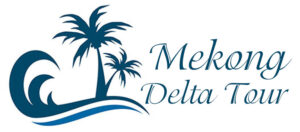The Mekong in Vietnam, a lifeline for millions in Southeast Asia, winds its way through Vietnam, offering a captivating glimpse into the region’s rich cultural heritage and diverse natural wonders. This mighty waterway, which traverses six countries, holds immense significance for Vietnam’s people, economy, and environment.
Introduction to the Mekong in Vietnam
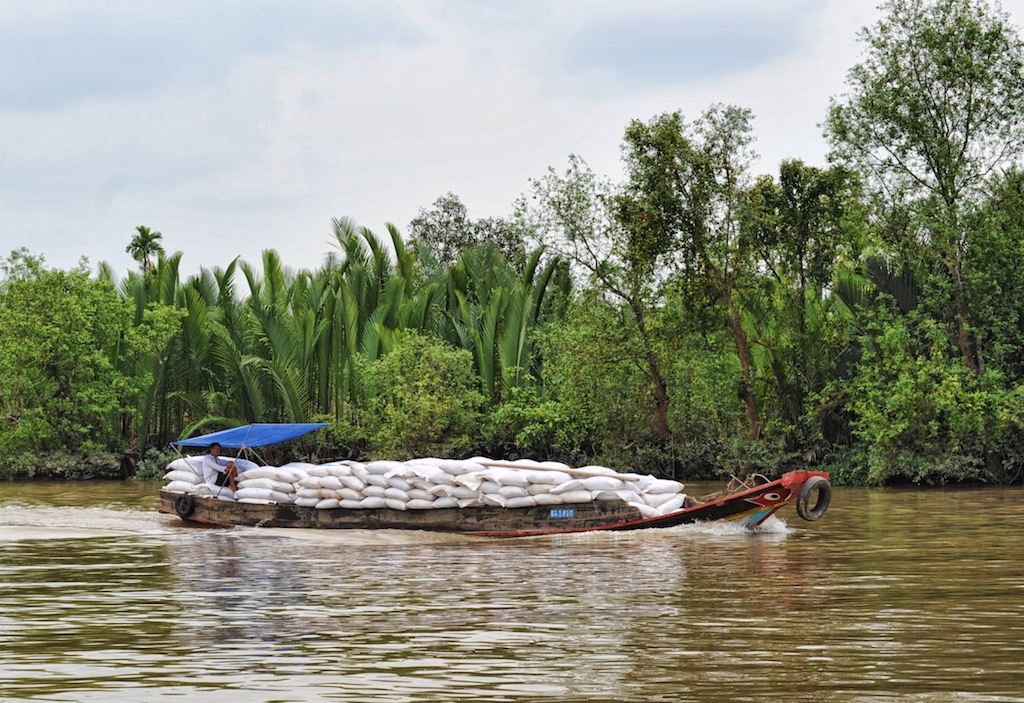
The Mekong’s Journey through Vietnam
The Mekong in Vietnam, known as the Lancang Jiang in China, is one of Asia’s longest and most important rivers. Originating from the Tibetan Plateau, it flows through China, Myanmar, Laos, Thailand, and Cambodia before entering Vietnam in the northwestern province of Lai Châu. From there, it carves its way through the country, dividing into two main branches – the Tien River and the Hau River – before ultimately draining into the South China Sea through a vast and fertile delta region.
Historical and Cultural Significance
For centuries, the Mekong River has played a pivotal role in shaping the lives and cultures of the communities along its banks. It has served as a vital transportation route, facilitating trade and cultural exchange between Vietnam and its neighboring countries. The river’s significance is deeply ingrained in Vietnamese folklore, literature, and art, reflecting its profound influence on the nation’s identity.
Geography of the Mekong in Vietnam
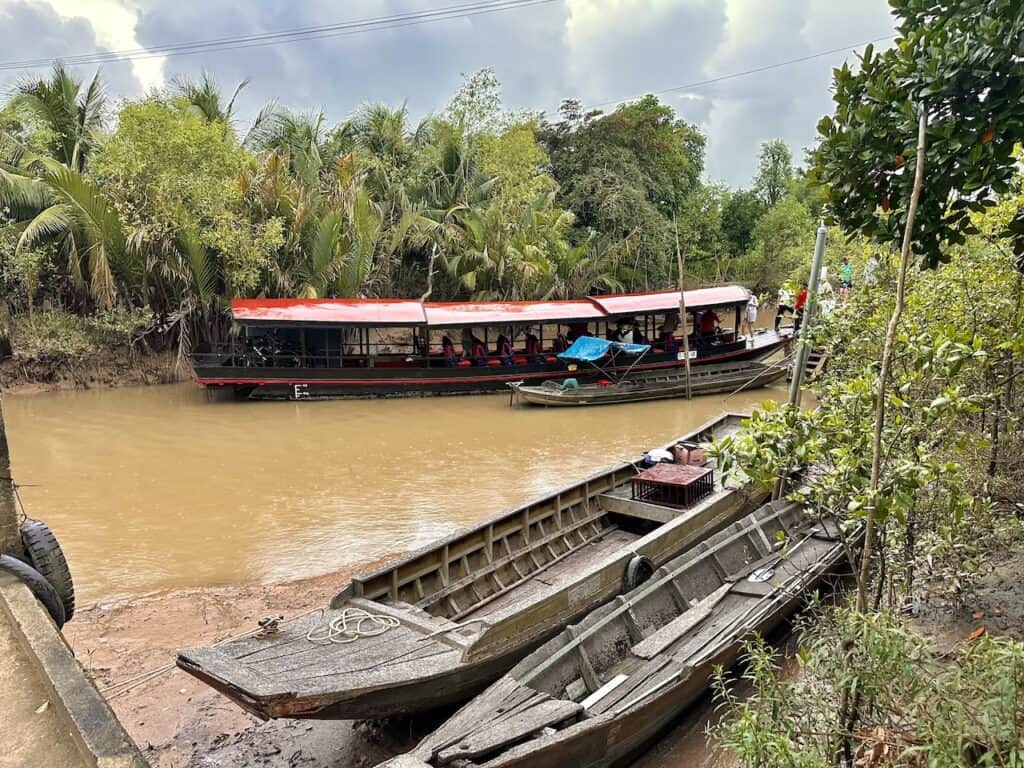
Upper and Lower Mekong
In Vietnam, the Mekong River can be divided into two distinct sections: the upper and lower Mekong in Vietnam.
Upper Mekong
The upper Mekong extends from the Chinese border to the town of Ban Muang in Pakse, Laos. This stretch of the river is characterized by its rugged terrain, fast-flowing currents, and multiple rapids. The upper Mekong region in Vietnam is home to several ethnic minority groups, including the Hmong, Dao, and Tay, who have developed unique cultural traditions and lifestyles adapted to the challenging environment.
Lower Mekong
The lower Mekong, spanning from Ban Muang to the river’s mouth in Vietnam, is gentler and wider, with a slower flowrate. This section of the river meanders through the lush landscapes of the Mekong Delta region, which is renowned for its fertile soil and extensive network of canals and tributaries.
The Mekong Delta
The Mekong in Vietnam, located in southwestern Vietnam, is a vast and intricate network of rivers, canals, and tributaries formed by the Mekong River as it approaches the South China Sea. This region, often referred to as the “Rice Bowl of Vietnam,” is an agricultural powerhouse, producing a significant portion of the country’s rice, fruits, and vegetables.
Flora and Fauna along the Mekong River in Vietnam
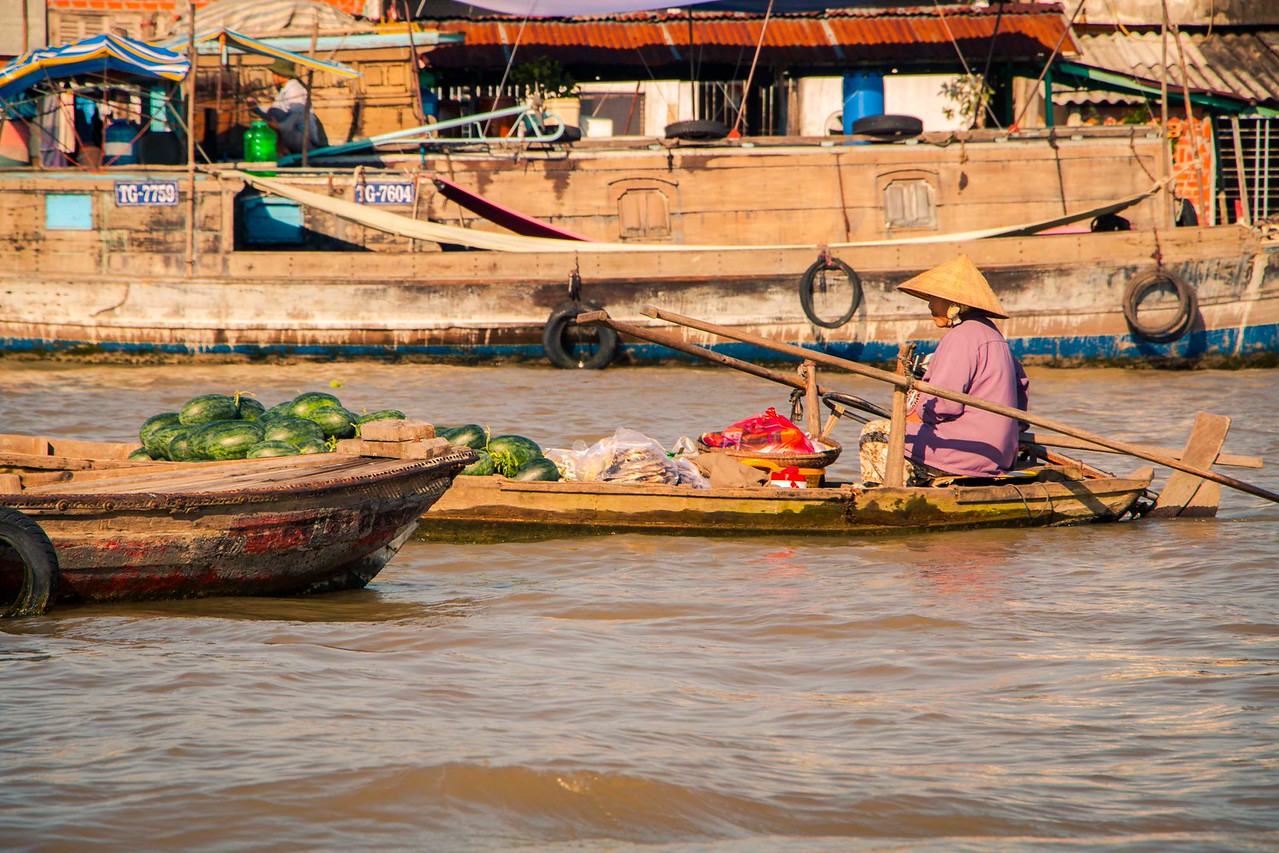
Biodiversity Hotspot
The Mekong River basin in Vietnam is renowned for its exceptional biodiversity. It supports a wide array of plant and animal species, including:
- Over 2,000 species of plants
- 430 species of fish
- 80 species of mammals
- 500 species of birds
This wealth of natural resources provides a vital source of food and livelihood for millions of people living in the region.
Unique Ecosystems
The Mekong River’s diverse ecosystems include:
- Tropical rainforests
- Wetlands
- Mangrove forests
- Freshwater habitats
These ecosystems support a rich variety of flora and fauna, including:
- Rare and endangered species like the Mekong giant catfish, Irrawaddy dolphin, and Siamese crocodile
- Iconic species like the Asian elephant, Indochinese tiger, and green peafowl
- Migratory birds that rely on the Mekong’s wetlands as stopover points during their annual journeys
Conservation Efforts
Conservation efforts are underway to protect the Mekong River’s biodiversity, including:
- Establishing protected areas and national parks
- Implementing sustainable fisheries management practices
- Raising awareness about the importance of preserving these unique ecosystems
Threats to Biodiversity
However, the Mekong River’s rich biodiversity faces several threats, including:
- Habitat loss and fragmentation due to development and urbanization
- Overfishing and illegal wildlife trade
- Pollution from agricultural runoff and industrial activities
- Climate change and its impact on water levels and temperatures
Addressing these challenges will require collaborative efforts from local communities, governments, and international organizations.
Cultural Significance of the Mekong in Vietnam

The River of Life
For centuries, the Mekong River has been a vital lifeline for the people of Vietnam, shaping their cultural traditions, beliefs, and way of life. It is often referred to as the “River of Life” or the “Mother of Waters,” reflecting its central role in sustaining communities along its banks.
Riverine Communities
Numerous ethnic groups, such as the Khmer, Cham, and Vietnamese, have developed unique riverine cultures and traditions closely tied to the Mekong in Vietnam. These communities rely on the river for fishing, agriculture, transportation, and spiritual practices.
Living on the Water
In the Mekong Delta region, many people live in floating houses or stilt-houses built along the river’s banks and canals. This aquatic way of life has given rise to a vibrant culture centered around the river, with unique architectural styles, traditional festivals, and culinary traditions.
Spiritual and Religious Significance
The Mekong River holds deep spiritual and religious significance for the people of Vietnam. It is revered as a sacred waterway, with many temples, pagodas, and shrines located along its banks. Annual festivals and ceremonies are held to honor the river’s importance and to seek blessings for bountiful harvests and prosperity.
Cultural Preservation and Tourism
In recent years, efforts have been made to preserve and promote the rich cultural heritage associated with the Mekong River. Community-based tourism initiatives offer visitors the opportunity to experience the authentic way of life of riverine communities, while also supporting local economies and preserving traditional customs and practices.
Economic Importance of the Mekong in Vietnam
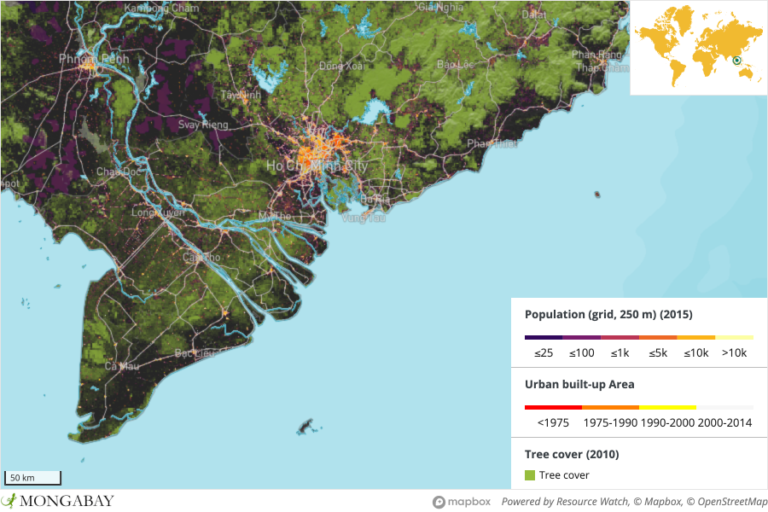
Agriculture and Fisheries
The Mekong River plays a crucial role in Vietnam’s agricultural and fishing sectors, which are vital components of the country’s economy.
Rice Cultivation
The Mekong Delta region, known as the “Rice Bowl of Vietnam,” is one of the world’s most productive rice-growing areas. The fertile alluvial soils and abundant water supply from the Mekong River make this region ideal for rice cultivation. Vietnam is a major exporter of rice, and the Mekong Delta accounts for a significant portion of the country’s rice production.
Freshwater Fisheries
The Mekong River and its tributaries support a thriving freshwater fishing industry. The river is home to a diverse array of fish species, including catfish, carp, and the iconic Mekong giant catfish. Fishing provides a livelihood for millions of people living along the river’s banks and contributes significantly to Vietnam’s food security and exports.
Transportation and Trade
The Mekong River serves as an essential transportation route for goods and people within Vietnam and between neighboring countries.
- Inland waterways facilitate the movement of agricultural products, construction materials, and other goods.
- River transportation is a cost-effective and environmentally friendly alternative to road and rail transport.
- The river’s navigability has fostered trade and economic integration between Vietnam and other Mekong countries, such as Laos, Cambodia, and Thailand.
Hydropower Generation
The Mekong River’s vast water resources have been harnessed for hydropower generation, contributing to Vietnam’s energy supply and economic development.
- Vietnam has several hydroelectric dams along the Mekong in Vietnam and its tributaries, including the Yali Falls Dam and the Xekaman 1 Dam.
- Hydropower provides a renewable and relatively clean source of electricity, supporting Vietnam’s industrial and urban growth.
- However, hydropower development also raises environmental concerns, such as disrupting fish migrations and altering river flows.
Tourism
The Mekong River and its surrounding landscapes offer diverse tourism opportunities, contributing to Vietnam’s growing tourism industry.
- River cruises and boat tours allow visitors to experience the unique riverine culture and natural beauty of the Mekong Delta region.
- Eco-tourism initiatives, such as wildlife watching and hiking in protected areas, attract nature enthusiasts and adventure seekers.
- Cultural tourism experiences, including visiting floating markets, traditional villages, and heritage sites, provide visitors with an authentic glimpse into the lives of riverine communities.
Challenges Facing the Mekong River in Vietnam
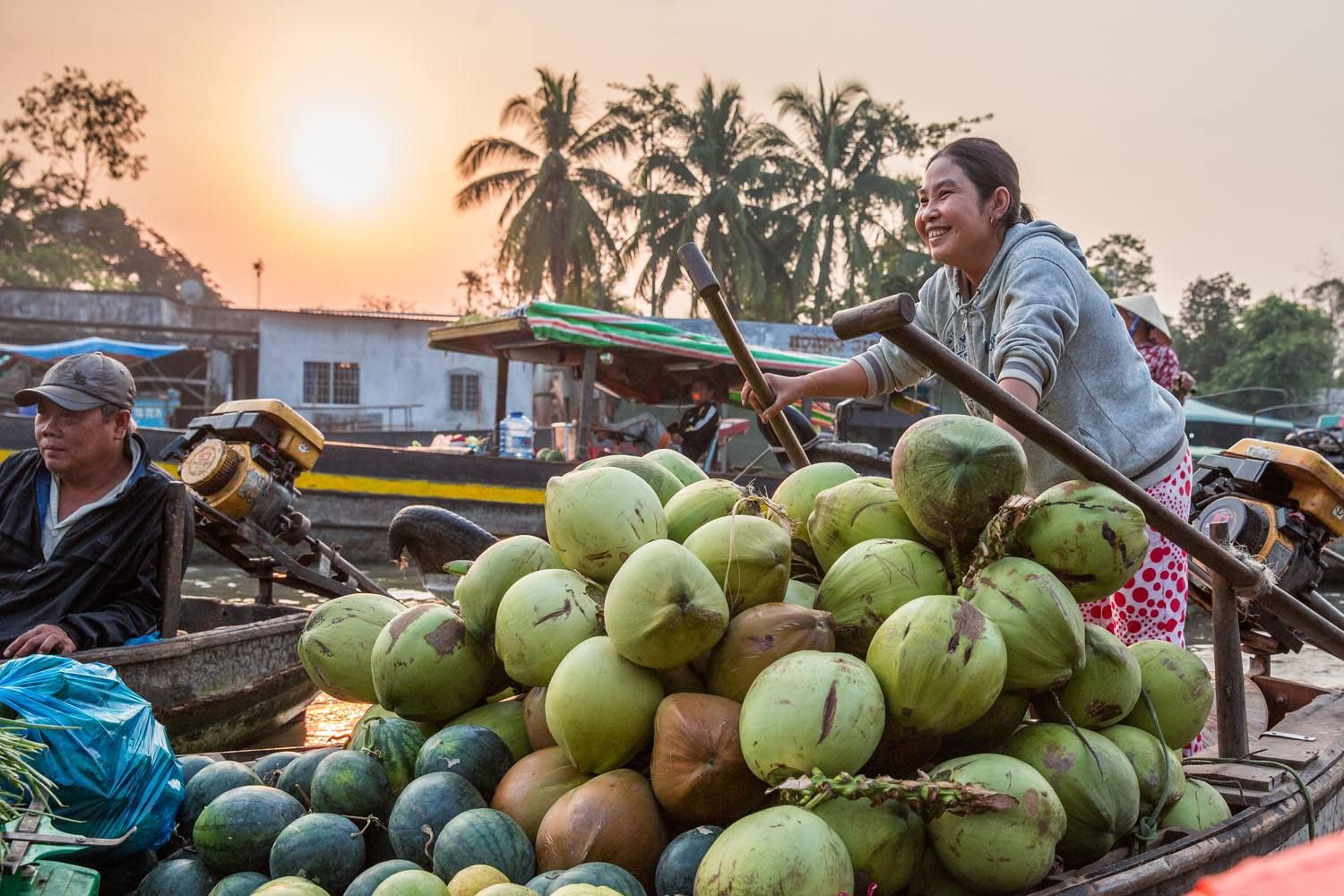
Environmental Degradation
The Mekong River and its ecosystems face several environmental challenges that threaten their long-term sustainability.
Water Pollution
Industrial effluents, agricultural runoff, and untreated domestic waste have contributed to water pollution in the Mekong Riverand its tributaries. This pollution not only affects water quality but also harms aquatic life and ecosystems. The discharge of chemicals, heavy metals, and nutrients into the river can have detrimental effects on biodiversity and human health. Addressing water pollution requires improved waste management practices, the enforcement of environmental regulations, and public awareness campaigns to promote responsible behavior.
Deforestation and Habitat Loss
Deforestation along the Mekong in Vietnam basin contributes to habitat loss and fragmentation, threatening the survival of many plant and animal species. Forest clearing for agriculture, logging, and infrastructure development reduces biodiversity, disrupts ecosystems, and increases the risk of soil erosion and landslides. Conservation efforts, such as reforestation programs and protected area management, are essential to preserve the natural habitats of the Mekong River and maintain ecosystem balance.
Climate Change Impacts
Climate change poses a significant threat to the Mekong River and its surrounding areas, leading to more frequent and severe weather events, changes in rainfall patterns, rising sea levels, and increased temperatures. These impacts can result in flooding, droughts, saltwater intrusion, and other environmental challenges that affect agriculture, fisheries, water resources, and communities’ livelihoods. Adaptation strategies, such as sustainable land use planning, water management practices, and climate-resilient infrastructure, are crucial to mitigate the effects of climate change on the Mekong River ecosystem.
Overfishing and Unsustainable Practices
Overfishing and unsustainable fishing practices pose a serious threat to the Mekong River’s fish populations and aquatic biodiversity. The use of destructive fishing methods, such as blast fishing, electrofishing, and poisoning, depletes fish stocks, damages habitats, and disrupts the ecological balance of the river. Implementing sustainable fisheries management measures, enforcing fishing regulations, promoting community-based conservation initiatives, and supporting alternative livelihoods are essential to ensure the long-term health of the Mekong River’s fisheries and ecosystems.
Dam Construction and Hydropower Development
The construction of dams and hydropower projects along the Mekong River and its tributaries has raised concerns about their environmental and social impacts. Large-scale dam development can alter river flows, sediment transport, and fish migration patterns, affecting aquatic ecosystems, biodiversity, and the livelihoods of local communities. Balancing the benefits of hydropower generation with the need to protect the Mekong River’s natural resources requires comprehensive impact assessments, stakeholder engagement, transboundary cooperation, and sustainable energy planning.
Pollution and Waste Management
Pollution from plastic waste, solid waste, and chemical contaminants poses a growing threat to the Mekong River’s ecosystems and water quality. Improper disposal of trash, inadequate wastewater treatment facilities, and the lack of recycling infrastructure contribute to the accumulation of pollutants in the river and its surroundings. Adopting waste reduction strategies, promoting recycling and waste separation practices, investing in clean technologies, and enhancing monitoring and enforcement mechanisms are essential steps to address pollution issues and safeguard the health of the Mekong River ecosystem.
Tourism Opportunities along the Mekong in Vietnam

Cultural Experiences
The Mekong River offers a wealth of cultural experiences for tourists seeking to explore Vietnam’s rich heritage and traditions.
- Visiting traditional floating markets, such as Cai Rang and Cai Be, provides insight into the vibrant commercial activities and local customs of riverine communities.
- Exploring ancient temples, pagodas, and historical sites along the riverbanks offers a glimpse into Vietnam’s spiritual and architectural heritage.
- Participating in cultural festivals, such as the Ok Om Bok festival or the Chol Chnam Thmay celebration, allows visitors to immerse themselves in the colorful traditions and rituals of the Mekong Delta region.
Ecotourism Adventures
Nature enthusiasts and eco-conscious travelers can enjoy a range of ecotourism adventures in the Mekong River area.
- Birdwatching tours in wetlands and nature reserves provide opportunities to spot rare and migratory bird species, such as painted storks, Asian openbills, and black-crowned night herons.
- Trekking and hiking expeditions in national parks and forested areas offer outdoor enthusiasts the chance to explore diverse ecosystems, encounter wildlife, and appreciate the natural beauty of the region.
- Kayaking or canoeing excursions along the Mekong River and its tributaries allow visitors to experience the tranquility of the waterways, observe local life up close, and discover hidden gems off the beaten path.
Culinary Delights
Food lovers can indulge in a culinary journey along the Mekong River, sampling a variety of local dishes and flavors.
- Enjoying a boat tour to taste fresh fruits, seafood, and street food specialties at riverside markets and food stalls showcases the diverse culinary offerings of the Mekong Delta.
- Taking a cooking class or food tour led by local chefs and experts provides insights into traditional recipes, cooking techniques, and the cultural significance of Vietnamese cuisine.
- Visiting organic farms, spice plantations, and traditional villages offers a farm-to-table experience, where visitors can learn about sustainable agriculture practices and savor authentic flavors straight from the source.
Adventure Activities
Thrill-seekers and active travelers can engage in a range of adventure activities and water sports along the Mekong River.
- Cycling through scenic countryside routes, rural villages, and lush orchards allows cyclists to explore the picturesque landscapes and local way of life at their own pace.
- Boating or cruising on the Mekong River and its canals offers a leisurely way to admire the natural beauty, observe wildlife, and visit off-the-beaten-path destinations.
- Fishing excursions with local guides provide anglers with the opportunity to catch freshwater fish species, learn traditional fishing techniques, and experience the thrill of fishing in the Mekong’s fertile waters.
Sustainable Tourism Practices
Promoting sustainable tourism practices is essential to ensure the long-term viability of tourism along the Mekong River.
- Supporting community-based tourism initiatives that empower local residents, preserve cultural heritage, and generate income for rural communities.
- Encouraging responsible travel behaviors, such as minimizing plastic waste, respecting local customs, and supporting environmentally friendly businesses.
- Engaging in eco-friendly activities, such as wildlife watching, nature conservation projects, and carbon offset programs, to minimize the environmental impact of tourism activities.
By embracing sustainable tourism principles, travelers can contribute to the preservation of the Mekong River’s natural and cultural assets while enjoying memorable and meaningful experiences in Vietnam.
Environmental Issues related to the Mekong in Vietnam
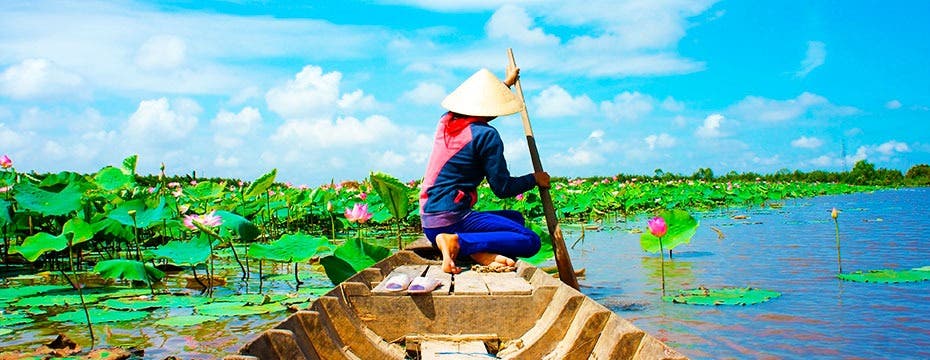
Water Pollution
Water pollution is a significant environmental issue affecting the Mekong in Vietnam, stemming from various sources such as industrial discharges, agricultural runoff, and domestic sewage.
- Industrial effluents contain harmful chemicals and heavy metals that contaminate the river water, impacting aquatic ecosystems and human health.
- Agricultural runoff, including pesticides and fertilizers, leads to nutrient pollution and algal blooms, reducing water quality and oxygen levels in the river.
- Untreated domestic sewage introduces pathogens and pollutants into the water, posing risks to public health and the environment.
Addressing water pollution requires implementing stringent regulations, improving wastewater treatment infrastructure, promoting sustainable agricultural practices, and raising awareness about the importance of clean water for all living organisms.
Deforestation and Habitat Destruction
Deforestation and habitat destruction along the Mekong River basin threaten the biodiversity and ecological balance of the region.
- Forest clearance for agriculture, logging, and urban development reduces forest cover, disrupts wildlife habitats, and increases the risk of soil erosion and landslides.
- Wetland degradation and mangrove deforestation diminish vital ecosystems that support diverse plant and animal species, including migratory birds and aquatic life.
- Loss of riparian vegetation along riverbanks contributes to bank erosion, sedimentation, and water quality degradation, impacting the overall health of the river ecosystem.
Conservation efforts, reforestation projects, protected area management, and sustainable land use practices are essential to combat deforestation, preserve habitats, and safeguard the natural heritage of the Mekong River.
Climate Change Impacts
Climate change poses significant challenges to the Mekong River ecosystem, exacerbating existing environmental pressures and introducing new threats.
- Rising temperatures and altered precipitation patterns affect water availability, agricultural productivity, and the frequency of extreme weather events in the region.
- Sea-level rise and saltwater intrusion threaten coastal areas and freshwater resources, impacting ecosystems, agriculture, and communities.
- Changes in river flow regimes, flood patterns, and sediment transport dynamics influence aquatic habitats, fish migrations, and sediment deposition processes.
Adapting to climate change requires implementing mitigation measures, enhancing resilience strategies, promoting sustainable resource management, and fostering international cooperation to address shared environmental concerns.
Biodiversity Loss
Biodiversity loss is a critical environmental issue facing the Mekong River in Vietnam, driven by habitat degradation, overexploitation of natural resources, and invasive species.
- Habitat loss and fragmentation reduce the availability of suitable environments for plant and animal species, leading to population declines and species extinctions.
- Overfishing and illegal wildlife trade threaten the survival of endangered species, disrupt food chains, and destabilize aquatic ecosystems.
- Invasive species, such as water hyacinth and tilapia, outcompete native flora and fauna, altering ecosystem dynamics and reducing biodiversity.
Conservation efforts, protected area management, sustainable resource utilization, and community engagement are essential strategies to protect biodiversity, restore ecosystems, and promote ecological balance in the Mekong River basin.
Plastic Pollution
Plastic pollution is a growing environmental concern along the Mekong in Vietnam, with plastic waste entering the waterway from various sources and accumulating in the environment.
- Single-use plastics, discarded packaging, and microplastics contaminate the river, endangering wildlife, polluting water bodies, and degrading ecosystems.
- Improper waste disposal practices, inadequate recycling facilities, and limited waste management infrastructure contribute to the proliferation of plastic pollution in the river.
- Marine debris and litter from urban areas, tourist activities, and industrial sites further exacerbate the problem of plastic pollution in the Mekong River.
Combatting plastic pollution requires implementing plastic waste reduction strategies, promoting recycling and circular economy initiatives, raising public awareness about plastic consumption, and advocating for policy measures to regulate plastic use and disposal.
Hydropower Development on the Mekong in Vietnam
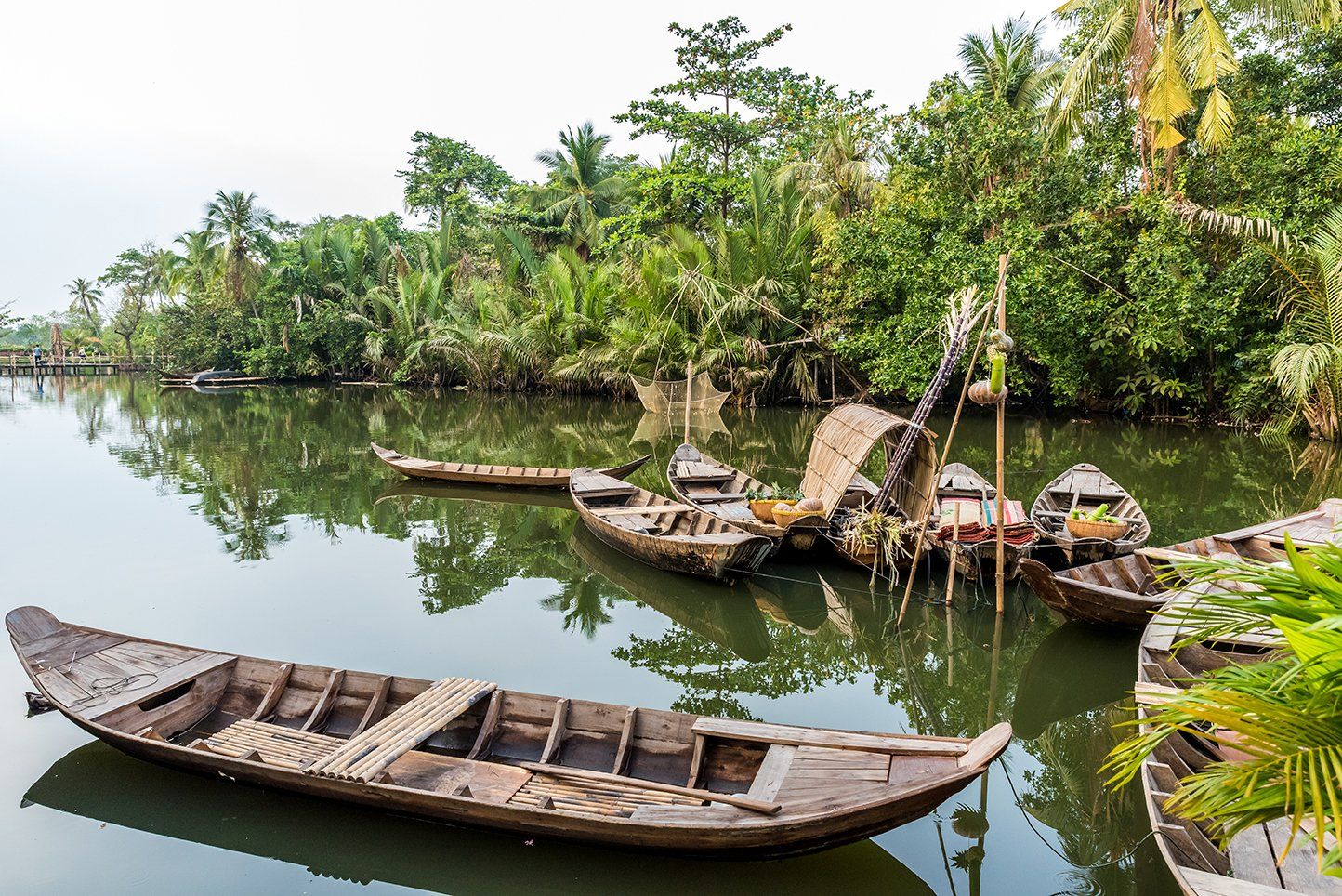
Hydropower Potential
The Mekong in Vietnam holds significant hydropower potential, which has been harnessed for electricity generation and economic development.
- The river’s fast-flowing waters and steep gradients provide ideal conditions for hydropower projects, offering renewable energy sources and reducing reliance on fossil fuels.
- Vietnam has developed several hydropower dams along the Mekong River and its tributaries, such as the Hoa Binh Dam, Son La Dam, and Lai Chau Dam, to meet the country’s growing energy demands.
- Hydropower contributes to Vietnam’s energy security, grid stability, and electrification efforts, supporting industrial growth, urbanization, and rural electrification initiatives.
Benefits of Hydropower
Hydropower development on the Mekong River brings various benefits to Vietnam’s economy, society, and environment.
- Clean Energy Generation: Hydropower is a renewable energy source that produces low greenhouse gas emissions, contributing to climate change mitigation and environmental sustainability.
- Economic Growth: Hydropower projects create job opportunities, stimulate investment in infrastructure, and boost local economies through revenue generation and industrial development.
- Flood Control: Dams and reservoirs help regulate river flows, manage flood risks, and improve water resource management, enhancing water security and disaster resilience in the region.
Environmental Concerns
Despite its benefits, hydropower development on the Mekong River raises environmental concerns and impacts on the river ecosystem.
- Alteration of River Flows: Dams modify natural flow regimes, sediment transport processes, and seasonal variations in water levels, affecting aquatic habitats, fish migrations, and sediment deposition downstream.
- Habitat Fragmentation: Reservoir construction and inundation of land lead to habitat loss, fragmentation, and changes in riparian ecosystems, disrupting biodiversity, and ecological connectivity.
- Fish Migration Barriers: Dams block fish migration routes, spawning grounds, and nursery habitats, reducing fish populations, biodiversity, and the productivity of fisheries in the river.
Social Implications
Hydropower development on the Mekong River also has social implications for local communities, indigenous peoples, and riverine populations.
- Resettlement and Relocation: Dam construction displaces communities, resettles households, and disrupts traditional livelihoods, leading to social conflicts, cultural impacts, and economic challenges for affected populations.
- Livelihood Changes: Changes in river ecology, fish stocks, and water availability due to hydropower projects affect fishing activities, agriculture practices, and water-dependent livelihoods, necessitating adaptation strategies and alternative income sources.
- Transboundary Issues: Hydropower development on the Mekong River basin raises transboundary concerns, as dams built upstream can impact downstream countries, water quality, sediment transport, and riverine ecosystems, requiring regional cooperation and sustainable water governance.
Sustainable Hydropower Practices
Promoting sustainable hydropower practices is essential to balance energy needs with environmental protection, social equity, and economic development.
- Environmental Impact Assessment: Conducting thorough environmental impact assessments (EIAs) and cumulative impact studies to evaluate the potential effects of hydropower projects on the Mekong River ecosystem, biodiversity, and local communities.
- Stakeholder Engagement: Engaging with stakeholders, indigenous groups, civil society organizations, and government agencies to ensure transparency, participation, and consultation in decision-making processes related to hydropower development.
- Adaptive Management: Implementing adaptive management approaches, monitoring programs, and mitigation measures to address environmental impacts, enhance project sustainability, and respond to changing conditions in the river basin.
By adopting sustainable hydropower practices, Vietnam can harness the benefits of clean energy production while minimizing the negative consequences of hydropower development on the Mekong River ecosystem and local communities.
Future Prospects for the Mekong River in Vietnam
Sustainable Development Pathways
The future prospects for the Mekong in Vietnam hinge on adopting sustainable development pathways that balance economic growth with environmental protection, social equity, and cultural preservation.
- Green Growth Strategies: Embracing green growth principles, renewable energy solutions, and sustainable resource management practices to promote economic prosperity while safeguarding the natural heritage of the Mekong River basin.
- Ecosystem-Based Approaches: Implementing ecosystem-based approaches, integrated water resource management, and climate-resilient strategies to conserve biodiversity, restore habitats, and enhance ecosystem services in the region.
- Community Empowerment: Empowering local communities, indigenous groups, and riverine populations to participate in decision-making processes, resource management initiatives, and sustainable development projects that benefit both people and the environment.
Transboundary Cooperation
Enhancing transboundary cooperation and regional collaboration is essential to address shared challenges, promote water diplomacy, and foster sustainable development in the Mekong River basin.
- Mekong River Commission: Strengthening the role of the Mekong River Commission (MRC) as a platform for dialogue, information sharing, and joint decision-making among riparian countries to manage water resources, mitigate risks, and enhance basin-wide cooperation.
- Multilateral Agreements: Ratifying and implementing multilateral agreements, such as the 1995 Mekong Agreement and the Sustainable Hydropower Development Strategy, to govern water use, hydropower development, and environmental protection in the Mekong River basin.
- Cross-Sectoral Partnerships: Building partnerships between governments, civil society organizations, research institutions, and private sector actors to promote sustainable practices, innovation, and knowledge exchange for the benefit of the Mekong River ecosystem and its communities.
Climate Resilience Measures
Building climate resilience, adapting to climate change impacts, and mitigating environmental risks are key priorities for ensuring the long-term sustainability of the Mekong River in Vietnam.
- Climate-Resilient Infrastructure: Investing in climate-resilient infrastructure, flood management systems, and water-sensitive urban design to reduce vulnerability to extreme weather events, sea-level rise, and water-related hazards in the region.
- Disaster Preparedness: Enhancing early warning systems, emergency response mechanisms, and community resilience measures to mitigate the impacts of floods, droughts, storms, and other climate-related disasters on the Mekong River basin.
- Nature-Based Solutions: Promoting nature-based solutions, green infrastructure projects, and ecosystem restoration initiatives to enhance water quality, biodiversity, and ecosystem services that support climate adaptation and mitigation efforts.
Sustainable Tourism Development
Promoting sustainable tourism development, responsible travel practices, and cultural heritage preservation can unlock the potential of the Mekong River as a premier destination for travelers seeking authentic experiences and natural wonders.
- Community-Led Tourism Initiatives: Supporting community-led tourism initiatives, homestay programs, and cultural exchanges that empower local residents, preserve traditional customs, and generate income for rural communities along the Mekong River.
- Eco-Friendly Tourism Practices: Encouraging eco-friendly tourism practices, wildlife conservation activities, and environmental education programs that raise awareness about the importance of protecting the Mekong River’s ecosystems, biodiversity, and cultural heritage.
- Heritage Conservation Efforts: Investing in heritage conservation projects, historical site preservation, and cultural heritage promotion to safeguard the unique traditions, architecture, and intangible cultural assets associated with the Mekong River in Vietnam.
Policy and Governance Reforms
Enacting policy and governance reforms, strengthening institutional capacities, and promoting good governance practices are essential for achieving sustainable development goals and ensuring the well-being of the Mekong River and its communities.
- Legal Frameworks: Enforcing existing laws, regulations, and international agreements related to water management, environmental protection, and sustainable development in the Mekong River basin to uphold the rights of stakeholders, protect natural resources, and promote equitable access to water.
- Institutional Coordination: Enhancing institutional coordination, inter-agency collaboration, and stakeholder engagement mechanisms to facilitate integrated water resource management, transboundary cooperation, and participatory decision-making processes in the region.
- Capacity Building: Building technical capacities, scientific expertise, and knowledge-sharing networks among government officials, researchers, practitioners, and community leaders to support evidence-based policymaking, adaptive management practices, and sustainable development initiatives in the Mekong River basin.
By embracing a holistic approach to sustainable development, leveraging the potential of green growth strategies, fostering transboundary cooperation, building climate resilience, promoting responsible tourism practices, and enacting policy and governance reforms, Vietnam can chart a course towards a prosperous, inclusive, and resilient future for the Mekong River and its people.
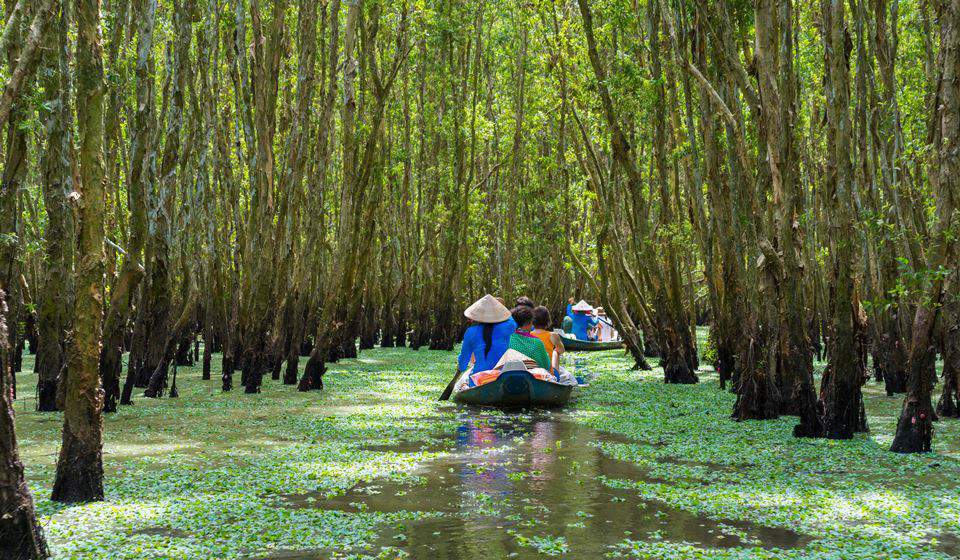
Conclusion
The Mekong in Vietnam is not just a waterway; it is a lifeline, a cultural symbol, an economic engine, and an environmental treasure. Its waters sustain diverse ecosystems, support local livelihoods, shape cultural identities, and drive economic activities that benefit millions of people. However, the Mekong River faces formidable challenges, from environmental degradation and climate change impacts to unsustainable development practices and transboundary disputes.
To secure a sustainable future for the Mekong River in Vietnam, concerted efforts are needed to conserve its biodiversity, protect its cultural heritage, harness its economic potential, and address the complex issues that threaten its well-being. By prioritizing ecosystem conservation, promoting sustainable development practices, fostering transboundary cooperation, empowering local communities, and engaging in responsible tourism activities, Vietnam can safeguard the Mekong River for future generations.
As the “Mother of Waters” continues to flow through the heart of Vietnam, carrying with it the hopes, dreams, and aspirations of

